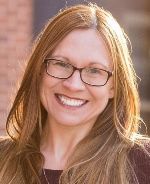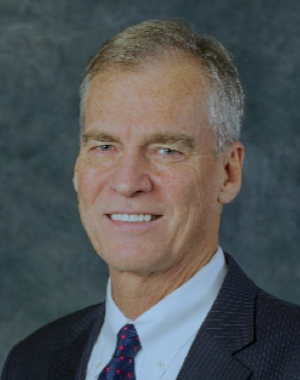Legislation Requires Fulltime Infection Preventionists at Nursing Homes
The Nursing Home Improvement and Accountability Act of 2021 bolsters the standing of infection preventionists, but begs the question: Where’s the money going to come from?
Nursing homes would be required to keep fulltime infection preventionists (IPs) on staff, under a bill introduced in the United States Senate yesterday. Nursing home advocacy organizations such as the American Health Care Association and National Center for Assisted Living (AHCA/NCAL) were quick to applaud the good intentions of the Nursing Home Improvement and Accountability Act of 2021.
Heather Saunders, MPH, RN, CIC, a member of Infection Control Today®’s (ICT®’s) Editorial Advisory Board, praises the effort, saying that “nursing homes have needed a full-time IP for years and have really been struggling without them.” Saunders, who is the director of infection control at the Johns Hopkins Office of Population Health, adds that although nursing homes “may have staff who manage infection prevention activities, these staff members are generally also managing a multitude of other responsibilities, taking away from the time needed to prevent and control infections.”
Heather Saunders, MPH, RN, CIC

However, good intentions alone won’t solve the myriad of problems in nursing homes, which were the nexus of the COVID-19 pandemic and still house residents most vulnerable to new iterations of SARS-CoV-2, such as the delta and lambda variants. (Although there are data indicating that the delta variant targets younger people more than earlier iterations.)
They need money, a fairly sizable chunk of federal funding in order to fulfill staffing mandates contained in the Act, advocates argue. Though the bill bolsters funding to Medicaid, that’s still not enough, according to Mark Parkinson, president and CEO of AHCA/NCAL. Parkinson said in a statement, that “the proposal to institute permanent minimum staffing requirements without a permanent funding source would be incredibly challenging for long-term care providers. Providers will not be able to meet staffing requirements if we can’t find people to fill the open positions. There must be a comprehensive approach to staffing beyond just numbers.”
The mandate that a fulltime IP be on staff in nursing homes is included in Section 205 of the Act. It includes “a requirement for the minimum number of hours per week that SNFs and NFs must provide, directly or under arrangements with others, for the provision of infection control services overseen by an infection preventionist. Such a minimum must not be less than 40 hours per week.”
Mark Parkinson, president and CEO of AHCA/NCA

Parkinson also wants to see legal disputes involving nursing homes mediated by an arbitrator, rather than a jury. “Arbitration is quicker and less costly than litigation in court and provides similar outcomes for residents and families,” Parkinson says in the statement. “An excessive litigation environment, coupled with the existing financial crisis, means thousands of long-term care facilities would be forced to close their doors, in turn, displacing tens of thousands of vulnerable residents and limiting access to critical services for our nation’s seniors.”
There’s no doubt that nursing homes and other long-term care facilities (LTCFs) struggle mightily these days. As ICT® reported, the facilities are losing employees in droves and a quarter of nursing homes might go out business this year.
The Association for Professionals in Infection Control and Epidemiology (APIC) has been calling for fulltime IPs to be staffed at nursing homes and other LTCFs. In addition, APIC wants states to mandate that anybody with the title “infection preventionist” at any health care facility be certified.
Last July, APIC’s then-president Connie Steed, MSN, RN, CIC, FAPIC, told ICT® that “my very strong speculation is that nursing homes will have a tremendous change in infection prevention and control staffing. I think COVID-19 has identified a vulnerability in this area as it relates to infection control, and there is a strong, dire need for infection preventionists that are knowledgeable in these facilities working all the time, fulltime, to ensure they have effective programs.” (APIC’s current president is Ann Marie Pettis, RN, BSN, CIC, FAPIC.)
New York Gov. Andrew Cuomo finds himself under political fire these days over allegations of sexual harassment. But Cuomo’s decisions regarding the role of nursing homes during the COVID-19 surges in that state also has him on the ropes. A scathing report issued in January by New York Attorney General Letitia James—Nursing Home Response to COVID-19 Pandemic—takes state health care officials to task for their management of nursing homes during the coronavirus disease 2019 (COVID-19) pandemic. The numerous blunders that the report notes includes this: “Government guidance requiring the admission of COVID-19 patients into nursing homes may have put residents at increased risk of harm in some facilities and may have obscured the data available to assess that risk.”
And while nursing home advocates argue that the facilities need more money, not only to fulfill the requirements in the Nursing Home Improvement and Accountability Act of 2021, should that become law, but to fulfill the requirements of laws already in place.
Saunders says that “I don’t think people realize how much time it takes to prevent and control infections, and if we want to do this effectively in nursing homes, we have to have a dedicated, full-time IP in each facility.”
There is, however, some speculation that nursing homes and other LTCFs have already gotten an influx of cash since COVID-19 began. The Center for Medicare Advocacy (CMA) issued a report in March that contends that nursing homes have more than enough funding to fix their problems. CMA, a not-for-profit advocacy organization for older Americans and those with disabilities, ticked off several revenue sources for nursing homes and other LTCFs, including the Provider Relief Fund.
Show, Tell, Teach: Elevating EVS Training Through Cognitive Science and Performance Coaching
April 25th 2025Training EVS workers for hygiene excellence demands more than manuals—it requires active engagement, motor skills coaching, and teach-back techniques to reduce HAIs and improve patient outcomes.
The Rise of Disposable Products in Health Care Cleaning and Linens
April 25th 2025Health care-associated infections are driving a shift toward disposable microfiber cloths, mop pads, and curtains—offering infection prevention, regulatory compliance, and operational efficiency in one-time-use solutions.
Phage Therapy’s Future: Tackling Antimicrobial Resistance With Precision Viruses
April 24th 2025Bacteriophage therapy presents a promising alternative to antibiotics, especially as antimicrobial resistance continues to increase. Dr. Ran Nir-Paz discusses its potential, challenges, and future applications in this technology.